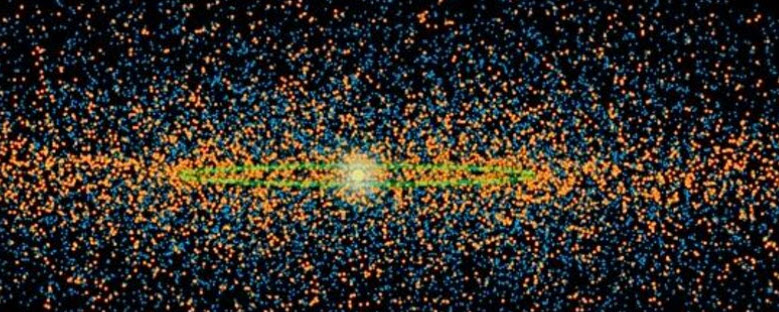File:Asteroid Watch JPL.jpg
Asteroid_Watch_JPL.jpg (779 × 312 pixels, file size: 113 KB, MIME type: image/jpeg)
<addthis />
August 2017
At NASA every day is an Asteroid Day
Planet Citizens, Planet Scientists, Look Up
NASA-funded astronomer teams are always on the hunt for potentially hazardous near-Earth objects, asteroids and comets whose orbits periodically bring them within 30 million miles of Earth's orbit. At NASA, the Planetary Defense Coordination Office supports the search programs, while also planning and coordinating any response to possible asteroid impacts.
Interested in Doing Some Observations that could Save the World?
Are you a Teen, Young Adult? Would Be Interested in Looking Up and Logging On to Report?
● https://twitter.com/AsteroidWatch
● https://phys.org/news/2017-08-nasa-supported-track-near-earth.html
NASA Jet Propulsion Laboratory (JPL): "NASA scientists are excited about the upcoming close flyby of a small asteroid and plan to use its upcoming October close approach to Earth as an opportunity not only for science, but to test NASA's network of observatories and scientists who work with planetary defense".
"We thought this would be a great opportunity to learn how to coordinate not only between observers within the USA but also observers around the world, about how to track asteroids".
NASA has never done a test like this before, previously their tests have been theoretical. Using a real asteroid to gauge the situation will help scientists understand the best course of action.
Professor Vishnu Reddy from the University of Arizona explains:
The question is: How prepared are we for the next cosmic threat? So we proposed an observational campaign to exercise the network and test how ready we are for a potential impact by a hazardous asteroid... This is an opportunity for the collaborative observation campaign to utilize the international aspect of the network.
This is a team effort that involves more than a dozen observatories, universities and labs across the globe so we can collectively learn the strengths and limitations of our near-Earth object observation capabilities.
● https://thespacereporter.com/2017/08/nasa-will-test-defense-system-earth-skimming-asteroid/
● https://www.nasa.gov/feature/jpl/asteroid-flyby-will-benefit-nasa-detection-and-tracking-network
● https://phys.org/news/2017-08-nasa-supported-track-near-earth.html
○
March 2015
Are You Tech Savvy?
NASA's Desktop Application Has Potential to Increase Asteroid Detection, Now Available to Public
NASA's Asteroid Data Hunter contest series was part of NASA's Asteroid Grand Challenge, which is focused on finding all asteroid threats to human populations and knowing what to do about them.
A software application based on an algorithm created by a NASA challenge has the potential to increase the number of new asteroid discoveries by amateur astronomers.
Analysis of images taken of our solar system's main belt asteroids between Mars and Jupiter using the algorithm showed a 15 percent increase in positive identification of new asteroids.
During a panel Sunday at the South by Southwest Festival in Austin, Texas, NASA representatives discussed how citizen scientists have made a difference in asteroid hunting. They also announced the release of a desktop software application developed by NASA in partnership with Planetary Resources, Inc., of Redmond, Washington. The application is based on an Asteroid Data Hunter-derived algorithm that analyzes images for potential asteroids. It's a tool that can be used by amateur astronomers and citizen scientists.
○
● https://www.greenpolicy360.net/w/Category:Extinction
○
File history
Click on a date/time to view the file as it appeared at that time.
| Date/Time | Thumbnail | Dimensions | User | Comment | |
|---|---|---|---|---|---|
| current | 17:44, 26 March 2015 | 779 × 312 (113 KB) | Siterunner (talk | contribs) | https://twitter.com/AsteroidWatch Category:Green Graphics |
You cannot overwrite this file.
File usage
The following 2 pages use this file:
